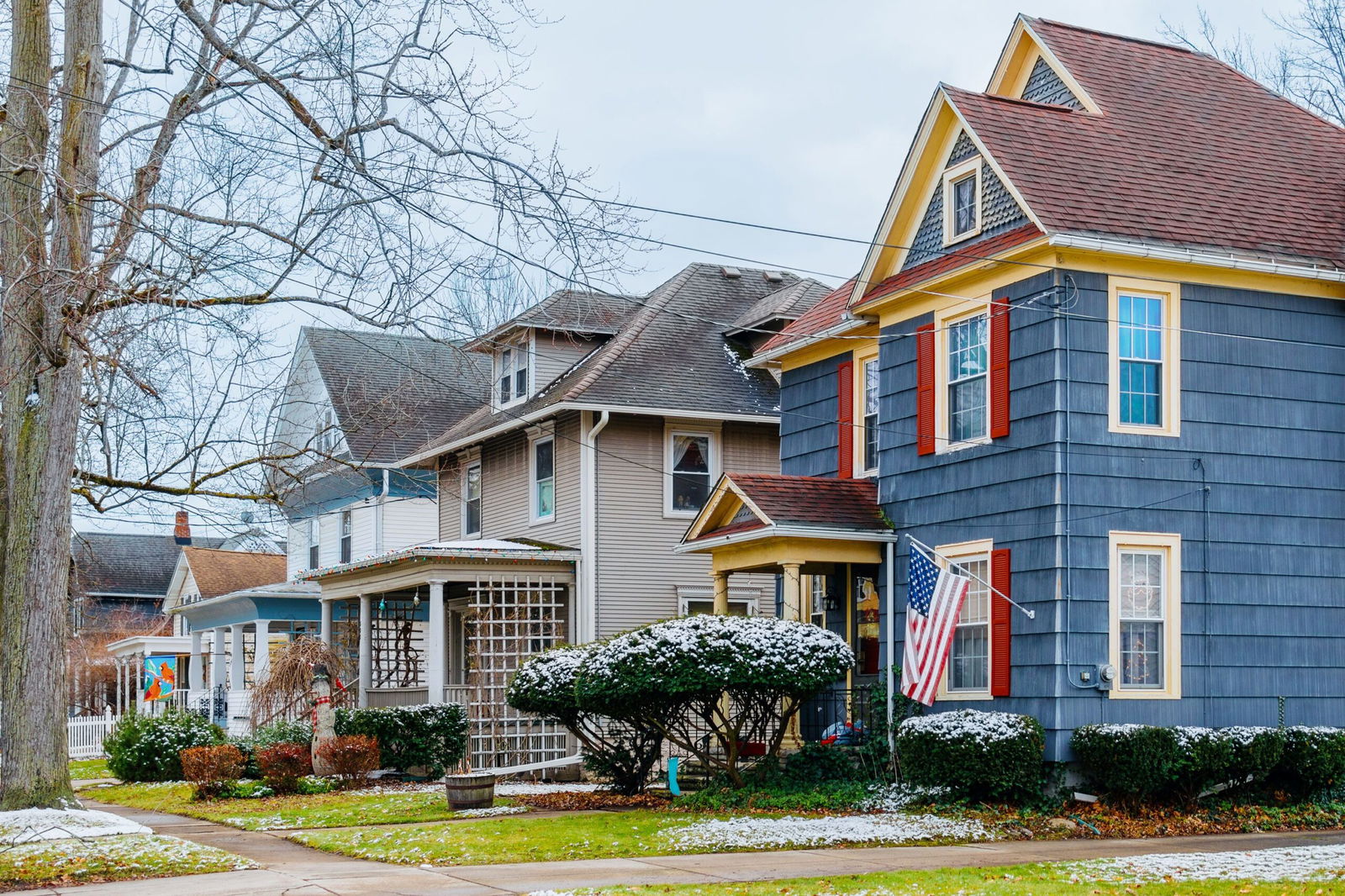The Trump administration is ‘actively evaluating’ portable mortgages. What you need to know

A row of single-family homes in Western New York. The Trump administration stepped up efforts to address housing affordability this past week.
By Samantha Delouya, CNN
(CNN) — The Trump administration has another idea to make housing more affordable: Let homeowners take their mortgage rate with them when they move.
On Wednesday, Federal Housing Finance Agency Director Bill Pulte said the administration is “actively evaluating” so-called portable mortgages. The proposal aims to address the housing market’s lack of supply.
The administration stepped up efforts to address housing affordability this past week. Pulte – who oversees Fannie Mae and Freddie Mac, the two government-backed entities that guarantee more than half of US mortgages – said officials are also weighing how to make mortgages assumable and whether to introduce a new 50-year mortgage option.
Just over half of homeowners with a mortgage have a rate below 4%, according to a Redfin analysis of FHFA data. However, average mortgage rates have remained stubbornly stuck between 6% and 7% for the last few years. Homeowners who locked in ultra-low mortgage rates have been less willing to move and potentially pay hundreds more in interest each month on new mortgages at current rates.
Allowing people to keep their lower mortgage rates could encourage them to move and free up supply. But there are questions about how that would work and whether it might wind up actually raising mortgage rates overall, said Susan Wachter, a professor of real estate at the Wharton School of the University of Pennsylvania.
When asked by CNN, the FHFA did not provide further details about its plans for portable mortgages. In a statement, a spokesperson said the agency was studying a “wide variety of options” to lower housing costs.
How do portable mortgages work?
A portable mortgage allows a borrower to transfer their existing mortgage and mortgage rate to a new property when they move, instead of taking out a brand-new loan.
For instance, imagine a homeowner selling their house for $400,000 with half of that paid off on a 3% mortgage. With a portable mortgage, they could sell their home and transfer the $200,000 left on the loan to the new house, keeping the 3% rate.
Things get trickier if the new home is more expensive. If it costs $450,000, for example, the buyer would need to cover the extra $50,000 either in cash or through a second, smaller loan likely issued at the current higher interest rate.
The hope is that if homeowners could move without losing their low rates, more homes would go up for sale, giving buyers who’ve been locked out a better shot, Wachter said. But the effects on supply would likely be limited, and it might take Congress passing a law to iron out legal wrinkles.
Might this backfire?
Portable mortgages could disrupt the engine powering the US housing market: mortgage-backed securities. Those are essentially bundles of mortgages that banks or lenders sell to investors, which gives the banks the cash they need to issue new loans and keep the mortgage market flowing.
If homeowners can take their loans with them when they move, fewer loans will be paid off early – which means more risk for investors, who might demand higher interest rates to compensate, Wachter said.
Additionally, mortgage agreements are clear contracts tied to a specific property, with the home’s address listed as collateral. Transferring that loan to a new house would mean effectively rewriting the contract.
“It’s too early to tell what’s going to happen, but it’s going to be a logistical nightmare,” said Justin Demola, the president of Lenders One, a national alliance of mortgage bankers. “All mortgages have a property address, a legal description. How do you get around that as you’re taking the mortgage to the next property?”
What else is the administration considering?
The Trump administration is also looking into a 50-year mortgage, but the proposal has drawn backlash from some housing experts. They argue that the monthly savings would be minimal compared to the significantly higher interest costs over the loan’s life versus a standard 30-year fixed mortgage.
The administration also brought up potentially allowing more assumable loans, meaning homebuyers can take over a seller’s existing mortgage and mortgage rate. Most government-backed loans, such as those from the Federal Housing Administration, are already assumable. In fact, there are companies that help buyers find homes with assumable mortgages.
However, Demola said he doesn’t see many first-time homebuyers assuming other people’s mortgages, since doing so typically requires a large cash payment or a second mortgage to buy out the existing loan.
“Loans have been assumable forever. You don’t really see many being assumed right now,” he said.
The-CNN-Wire
™ & © 2025 Cable News Network, Inc., a Warner Bros. Discovery Company. All rights reserved.



